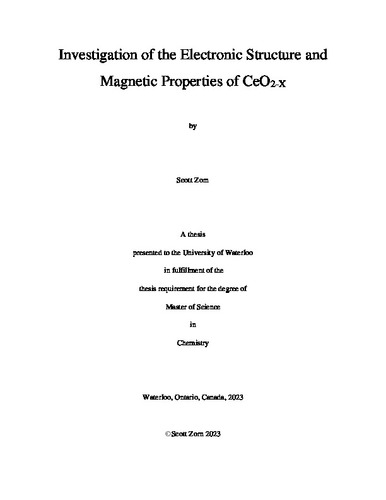| dc.description.abstract | In literature, it has been reported that undoped CeO2 exhibits a room-temperature ferromagnetic-like ordering that does not follow Curie-type behaviour, typically found in magnetic materials. However, none of the proposed mechanisms have yet to be proven experimentally. So, the goal of this thesis was to study the magnetic and magneto-optical properties of CeO2 to determine the potential mechanism causing the ferromagnetic-like ordering. This was done by systematically annealing undoped CeO2 from nanocrystals (NCs) into bulk powders under different annealing time, temperature, and atmosphere to observe grain size and defect concentration impacts on the magnetic properties. Structural characterization, optical, magnetic, and magneto-optical measurements were then conduct on colloidal CeO2-X NCs and annealed CeO2-X powders to contrast the systems. The origin of the ferromagnetic-like ordering was determined by comparing the samples using magnetic circular dichroism (MCD) spectroscopy. It was found that the origin of d0 ferromagnetic-like ordering in CeO2 may be caused by charge transfer-mediated magnetism. Where a delocalized charge transfer from either electrons trapped in oxygen vacancies or O 2p valence electrons to Ce 4f mid-band gaps states causes Stoner splitting to polarize the spins at the Fermi level, creating an uneven number of unpaired spins, and an overall net magnetic moment. The magnetic ordering can be enhanced by annealing CeO2 into bulk powders, where the magnetic signal was controlled directly by the grain size of the crystals and indirectly supported by the concentration of Ce3+/oxygen vacancy defects. With further characterization using temperature dependent XRD, SEM analysis of grain sizes, additional PPMS data, and temperature dependent MCD, the room temperature ferromagnetic-like ordering in CeO2 can ultimately be confirmed and CeO2 could become a promising candidate material for spintronic applications. | en |

